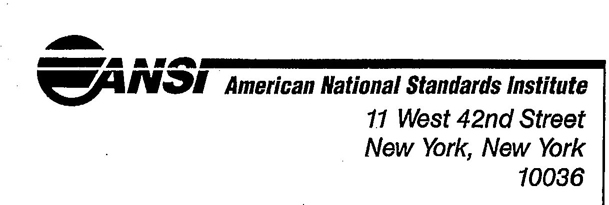
In order to promote public education and public safety, equal justice for all, a better informed citizenry, the rule of law, world trade and world peace, this legal document is hereby made available on a noncommercial basis, as it is the right of all humans to know and speak the laws that govern them.
ANSI Z245.1-1992
American National Standard
for Refuse Collection, Processing, and Disposal Equipment—
Mobile Refuse Collection and Compaction Equipment—Safety Requirements

ANSI-Z245.1
ADOPTION NOTICE
ANSI–Z245.1, “Waste Collection, Processing, and Disposal Equipment –Mobile Refuse Collection and Compaction Equipment–Safety Standards For, " was adopted on October 3, 1994 for use by the Department of Defense (DoD). Proposed changes by DoD activities must be submitted to the DoD Adopting Activity: Commander, US Army Tank-Automotive Command, ATTN: AMSTA–GLC, Warren, MI 48397-5000. DoD activities may obtain copies of this standard from the Standardization Document Order Desk, 700 Robbins Avenue, Building 4D, Philadelphia, PA 19111-5094. The private sector and other Government agencies may purchase copies from the American National Standards Institute, 11 West 42nd Street, New York, NY 10036.
Adopting Activity
Army – AT
Custodians:
Army – AT
Navy – YD–1
Air Force – 99
FSC 4540
DISTRIBUTION STATEMENT A. Approved for public release; distribution is unlimited.
D EANSI®
Z245.1-1992
Partial Revision of
ANSI Z245.1-1984
Secretariat
National Solid Wastes Management Association
Approved January 3, 1992
American National Standards Institute, Inc.
American National Standard
Approval of an American National Standard requires verification by ANSI that the requirements for due process, consensus, and other criteria for approval have been met by the standards developer.
Consensus is established when, in the judgment of the ANSI Board of Standards Review, substantial agreement has been reached by directly and materially affected interests, Substantial agreement means much more than a simple majority, but not necessarily unanimity. Consensus requires that all views and objections be considered, and that a concerted effort be made toward their resolution.
The use of American National Standards is completely voluntary; their existence does in any respect preclude anyone, whether he has approved the standards or not, from manufacturing, marketing, purchasing, or using products, processes, or procedures not conforming to the standards.
The American National Standards Institute does not develop standards and will in no circumstances give an interpretation of any American National Standard. Moreover, no person shall have the right or authority to issue an interpretation of an American National Standard in the name of the American National Standards Institute. Requests for interpretations should be addressed to the secretariat or sponsor whose name appears on the title page of this standard.
CAUTION NOTICE: This American National Standard may be revised or withdrawn at any time. The procedures of the American National Standards Institute require that action be taken periodically to reaffirm, revise, or withdraw this standard. Purchasers of American National Standards may receive current information on all standards by calling or writing the American National Standards Institute.
Published by
American National Standards Institute
11 West 42nd Street, New York, New York 10036
Copyright © 1992 by American National Standards Institute
All right reserved.
No part of this publication may be reproduced in any
form, in an electronic retrieval system or otherwise,
without prior written permission of the publisher.
Printed in the United States or America
APS5C492/24
G| Page | ||
| Foreword | ii | |
| 1 | Scope and purpose | 1 |
| 2 | Normative references | 2 |
| 3 | Definitions | 2 |
| 4 | Construction, installation, reconstruction, and modification | 13 |
| 5 | Operating and maintenance instructions | 13 |
| 6 | Operational requirements | 14 |
| 7 | Mobile equipment safeguards and features | 16 |
| Figures | ||
| 1 | Front-loading compacting equipment | 4 |
| 2 | Hoist-type equipment | 5 |
| 3 | Mechanized container collecting equipment | 6 |
| 4 | Recycling collection equipment | 6 |
| 5 | Rear-loading compacting equipment | 8 |
| 6 | Container operation of rear-loading compacting equipment | 8 |
| 7 | Rear loader container lifting equipment | 9 |
| 8 | Side-loading compacting equipment | 11 |
| 9 | Tilt-frame equipment | 12 |
| 10 | Refuse transfer trailer | 13 |
| 11 | Mobile compactor rear-riding step configuration | 19 |
| Annex | ||
| A | Bibliography | 22 |
(This foreword is not part of American National Standard Z245.1–1992.)
This American National Standard is applicable to the construction, reconstruction, modification, care, maintenance, operation, and use of mobile refuse collecting and compacting equipment. The standard identifies requirements for the following refuse collecting and compacting equipment mounted on refuse truck chassis: refuse collecting and compacting equipment mounted on refuse truck chassis: rear-loading, front-loading, and side-loading compacting equipment; tilt frame and hoist-type equipment; satellite vehicles; waste transfer vehicles; recycling collection vehicles; and mechanized container collecting equipment. The standard shall not apply to the truck chassis/cab upon which the refuse collecting and compacting equipment is mounted.
Previous editions of this standard (ANSI Z245.1–1975 and ANSI Z245.1–1984) covered mobile collecting and compacting equipment and stationary compacting equipment. The current edition contains requirements for mobile collecting and compacting equipment only. Requirements for newly manufactured stationary compactors are contained in American National Standard for Refuse collection, processing, and disposal equipment—Stationary compactors—Safety requirements, ANSI Z245.2–1992, and pertain to stationary compactors manufactured after the effective date of that standard. Stationary compactors manufactured before that date are still covered by ANSI Z245.1–1975 and ANSI Z245.1–1984.
This standard contains one informative annex, which is not considered part or this standard.
Suggestions for improvement of this standard will be welcome. They should be sent to the National Solid Wastes Management Association, 1730 Rhode Island Avenue, NW, 10th Floor, Washington, DC 20036.
This standard was processed and approved for submittal to ANSI by the Accredited Standards Committee on Refuse Collection, Processing and Disposal, Z245. Committee approval of this standard does not necessarily imply that all committee members voted for its approval. At the time it approved this standard, the Z245 Committee had the following members:
H. Lanier Hickman, Jr., Chairman
John A. Legler, Secretary
| Organization Represented | Name of Representative |
|---|---|
| AIG Risk Management | Joseph Karch |
| American Federation of State County and Municipal Employees |
Gilbert Escudero Steve Fantuzzo (Alt.) |
| Baler Committee | Gary Musselwhite Kent Spiers (Alt.) |
| Browning-Ferris Industries | Gerald Van Beek Lynette Lenard (Alt.) |
| City of Baltimore | George Winfield |
| City of Dallas | William S. Gross |
| City of Springfield Fire Department | Wes Beitl |
| Compactor Committee | Jim Cunningham John Richardson (Alt.) |
| Container Committee | Denny Gill Paul Dulhanty (Alt.) |
| Institute of Scrap Recycling Industries | Michael Mattia |
| Institute of Waste Equipment Distributors |
Skip Berg Tom Williams (Alt.) |
| Laidlaw Waste Systems | Jeff Franklin Ron Priest (Alt.) ii |
| National Solid Wastes Management Association | John Legler Charles Johnson (Alt.) |
| Solid Waste Association of North America | H. Lanier Hickman Bob Peters (Alt.) |
| State of Pennsyivania | William LaCour Carl Hursh (Alt.) |
| Waste Equipment Manufacturers Institute – Mobile Equipment Committee |
Larry Horning Charles Duell (Alt.) |
| Waste Management | Steve Duell Stan Ruminski (Alt.) |
The Z245.1 Standard Development Subcommittee, which provided significant input to this revised American National Standard, had the following members:
| Gerald Zanzig, Chairman John A. Legler, Secretary |
Steve Bell Skip Berg Michael Fillion Larry Horning Larry Kafer |
Michael Lynn Bob McReynolds Gerald Van Beek George Winfield |
AMERICAN NATIONAL STANDARD ANSI Z245.1–1992
American National Standard
for Refuse Collection,
Processing and Disposal Equipment—
Mobile Refuse Collection
and Compaction Equipment—
Safety Requirements
1.1 Scope
This American National Standard is applicable to all persons engaged in the manufacture, modification, operation, cleaning, maintenance, service, or repair of mobile collecting and compacting equipment. It makes an attempt to distinguish between persons who may be the legal owner, lessor, lessee, or who are otherwise contracted with, or hired to become involved with, the equipment.
Stationary compactors, which were included in American National Standard Safety requirements for refuse collection and compaction equipment, ANSI Z245.1–1975, and American National Standard for Refuse Collection and Compacting equipment – Safety requirements, ANSI Z245.1–1984, are now covered by American National Standard for Refuse collection, processing, and disposal equipment – Stationary compactors – Safety requirements, ANSI Z245.2–1992, as of the effective date of that standard.1)
The safety requirements are divided into seven clauses and are applicable as described in 1.1.1 through 1.1.3.
1.1.1 Clauses 1 through 3 provide general information and definitions and shall apply to all mobile collecting and compacting equipment covered by this standard.
1.1.2 Clauses 4 through 6 provide requirements that shall apply to both new and existing mobile collecting and compacting equipment.
1.1.3 Clause 7 provides requirements that shall apply to mobile rear-loading, side-loading, front-loading, and mechanized container collecting equipment used to receive, compact, transport, and unload refuse; to mobile tilt-frame and hoist-type equipment commonly used to pick up, transport, unload, and set down open top or enclosed refuse containers; to vehicles used to receive, separate, densify, transport and unload recyclable wastes; to vehicles used to transfer waste from one waste processing or disposal facility to another; and to satellite vehicles commonly used to receive and transport refuse for unloading into other mobile refuse collecting equipment.
1.2 Purpose
The purpose of this standard is to establish safety requirements with respect to the manufacture, reconstruction, modification, maintenance, service, operation, and installation (where applicable) of mobile collecting and compacting equipment.
1.3 Effective date
This standard replaces ANSI Z245.1–1984. Provisions of that standard, which are carried forward into this standard, remain in effect and
1) See 1.3 of ANSI Z245.2–1992 for a fuller explanation of the effective date as it applies to stationary equipment built between 1977 and the present.
1are immediately applicable to all new mobile collecting and compacting equipment. Because of the difficulty of changing manufacturers’ production lines to incorporate the provisions that are either new or are revisions of sections of ANSI Z245.1-1984, the following guidelines have been selected by Accredited Standards Committee Z245 as to effective dates:
– for all new mobile collecting and compacting equipment, twenty-four (24) months after the approval date of this standard;
– for all existing mobile equipment manufactured during the period May 2, 1986 until 24 months after the approval date of this standard, the provisions of ANSI Z245.1-1984 shall apply;
– for all existing mobile equipment manufactured during the period March 16, 1978 until May 1, 1986, the provisions of ANSI Z245.1-1975 shall apply;
– for all existing mobile equipment, regardless of the date of manufacture the provisions of 4.2, 4.3, 5.2, and clause 6 shall apply 24 months after the approval date of this standard.
The following standards contain provisions which, through reference in this text, constitute provisions of this standard. At the time of publication, the editions indicated were valid. All standards are subject to revision, and parties to agreements based on this standard are encouraged to investigate the possibility of applying the most recent editions of the standards indicated below.
ANSI Z53.1-1979, Safety color code for marking physical hazards2)
ANSI Z245.1-1975, Safety requirements for refuse collection and compaction equipment3)
ANSI Z245.1-1984, Refuse collection and compaction equipment3)
ANSI Z245.6-1990, Dimensions for containers used in conjunction with rear loader equipment lifting systems
ANSI/SAE J994b, Performance, test and application criteria for electrically operated alarm backup devices.
The U.S. Code of Federal Regulations, Title 29. See specifically U.S. Occupational Safety and Health Administration Regulation 29 CFR Part 1910.147, Lockout/tagout of energy sources, effective January 2, 19904)
U.S. Code of Federal Regulations, Title 49 (U.S. Department of Transportation), Parts 392, 393, 396, 399, 565, 566, 567, 568, 569, 570, and 5714)
For the purposes of this American National Standard, the general definitions in 3.1 through 3.14 and the equipment definitions in 3.15 through 3.50 shall apply, unless the context clearly indicates otherwise.
3.1 caution signs: Signs that indicate an area of potential danger or a hazard, that is, a hazard capable of resulting in severe but not irreversible injury or damage. In some instances, the hazard may be associated with danger, but of significantly less magnitude.
3.2 danger signs: Signs that indicate areas of immediate and grave danger or peril, a hazard capable of producing irreversible damage or injury. These signs also indicate prohibitions against harmful activity.
3.3 employee: An individual hired by an employer to work for compensation in the business of repairing, cleaning, maintaining, or operating equipment.
2) This American National Standard has been administratively withdrawn and will be superseded by ANSI Z535. 1 through Z535.5. The ANSI Z535 Series of standards will be published by the National Electrical Manufacturers Association (NEMA), 2101 L Street, NW, Washington, DC 20037, Contact NEMA for more recent information. (ANSI Z53.1-1979 is still available in archive form from ANSI. Contact ANSI's Sales Department.)
3) This American National Standard is currently superseded by ANSI Z245. 1-1992. (ANSI Z245.1-1975 and ANSI Z245.1-1984 are available for sale in archive form from ANSI. Contact ANSI's Sales Department.)
4) Available from the Superintendent of Documents, US Government Printing Office, Washington, DC 20402.
23.4 employer: A person who hires one or more individuals to work for compensation in the business of repairing, cleaning, maintaining, or operating equipment.
3.5 hazard: A term that describes a condition of such a nature that it may precipitate an accident.
3.6 maintenance personnel: Employees who service, inspect, clean, or maintain equipment.
3.7 manufacturer: The term manufacturer of mobile equipment includes the incomplete vehicle manufacturer, the intermediate manufacturer and the final-stage manufacturer within the context of U.S. Code of Federal Regulations, Title 49, Part 568.3, under the responsibility of the U.S. Department of Transportation.
3.8 modification: Any change, alteration, addition to, or removal from the original equipment or component made in such a manner that the changed or altered portions or functions of the equipment or component are different from the manufacturer's original design, specification, or use.
3.9 operator: An employee who controls the use and operation of equipment, and who may clean the equipment other than in the course of servicing, maintenance, or repair.
3.10 person: An individual, corporation, partnership, legal entity, or business, but not including individuals who are employed as maintenance personnel or operators as defined herein.
3.11 pinch point: A point at which it is possible to be caught between moving parts, or between moving and stationary parts, of a piece of equipment.
3.12 reconstruction: The disassembly and reassembly of equipment, generally for the purpose of placing the equipment back into full operation and substantially extending the service life beyond the normal service life contemplated at the time of original manufacture. Reconstruction, rebuilding, or overhaul can result in the equipment being repaired or modified or both.
3.13 refuse: Any type of solid waste (except human wastes) including garbage, rubbish, ashes, incinerator residues, street cleanings, plant trimmings, and residential, commercial, and industrial solid wastes, including recyclable materials.
3.14 Safety factor: The ratio of the breaking strength of a component (for example, a winch cable) to the maximum designed load or stress when used in accordance with the manufacturer's instructions.
3.15 access door: A panel covering an opening located on the body of mobile equipment that is designed to permit access by a person to the inside of the body for the purpose of service or maintenance.
3.16 body: The refuse-carrying portion of mobile equipment. For rear-loading compacting equipment, the body does not include the tailgate.
3.17 collecting vehicle: An engine-powered cab and chassis upon which mobile equipment is mounted for the loading, compacting, transporting, and unloading of refuse, or for the receiving, transporting, and unloading of containers.
3.18 container: A receptacle that receives and holds refuse for unloading by mechanical means into that body or loading hopper of mobile compacting equipment of satellite vehicles. Containers are specially designed for use with certain types of mobile equipment. Containers used with rear loading compacting equipment may incorporate features that differ from containers used with front-loading compacting equipment. Containers used in conjunction with tilt-frame and hoist-type equipment are designed to be picked up, transported, unloaded, and set off by that equipment. These containers receive, store and transport compacted or loose refuse, and are hoisted onto the tilt-frame or hoist-type equipment (commonly referred to as roll-offs, luggers and hook-lifts).
3.19 cycle: The operation of a mechanism to perform one complete operation having a definite beginning and end. An interrupted cycle is one in which the operation of a mechanism stops automatically before completion of the cycle.
3.20 ejector panel: The movable panel used for ejecting the compacted refuse from the body. For front loaders and some side
3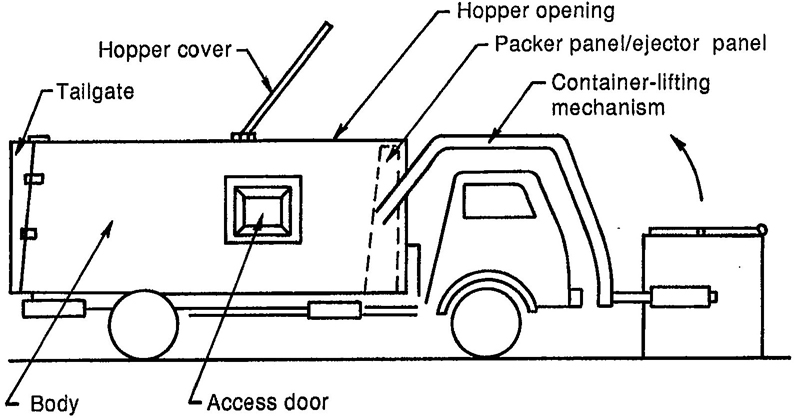
Figure 1 – Front-loading compacting equipment
loaders, the ejector panel is also the packing panel.
3.21 front-loading compacting equipment or front loader: The container-lifting mechanism and body of a front loading collecting vehicle, that loads, compacts, transports, and unloads refuse (see figure 1).
3.22 container-lifting mechanisms: The component mechanisms of the front-loading compacting equipment, such as (but not limited to) lifting arms, forks, and hydraulic cylinders, that is used to lift containers for unloading refuse into the body of a front loader.
3.23 hopper cover (top door cover): The panel(s) located on top of the refuse body (near the front) through which refuse is loaded into the body.
3.24 hopper opening: The opening on the top of the refuse body (near the front) through which refuse is loaded into the body.
3.25 point of operation: The immediate area surrounding the container-lifting mechanism(s) when it is used for approaching, elevating and unloading the container.
3.26 grab handle: An attachment to the body or tailgate to furnish an employee with a handhold.
3.27 hoist-type equipment or hoist equipment: The hoist arms, chains, and frames used to elevate, support, transport, dump, and unload refuse containers. Hoist-type equipment is mounted on an engine-powered cab and chassis (see figure 2).
3.28 loading platform: The platform(s) provided to assist employees in loading refuse into the collection vehicle. Loading platforms are not intended for riding (see 3.41).
3.29 lifting devices: The cables, chains, winches, mechanical balls, arms, hydraulic cylinders, and fasteners used to lift containers for unloading refuse into the loading hopper or charging chamber or to pull containers onto the mobile tilt-frame and hoist-type equipment, and pick up, load, and/or set off the container or refuse, or both.
3.30 interlock: A device or mechanism used to connect individual components together so that the action of one part of the equipment is constrained by, or dependent upon, another.
3.31 loading height: The vertical distance between loading sill and working surface.
3.32 loading hopper: The part of the mobile equipment used for receiving refuse.
4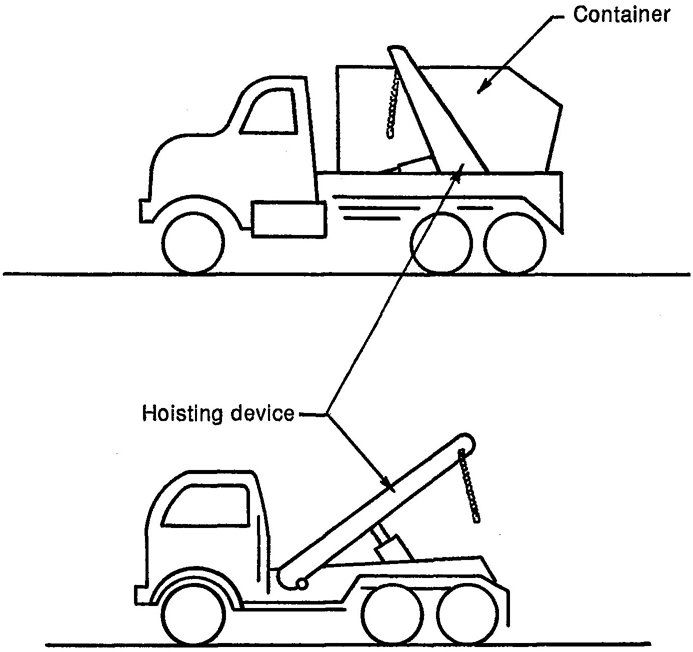
Figure 2 – Hoist-type equipment
3.33 loading sill: The ledge over which refuse is deposited into the loading hopper.
3.34 mechanized container collecting equipment: Side or top loading collecting vehicles, with container-lifting mechanisms, that receive, compact, transport, and unload refuse. The container-lifting mechanism may or may not have articulated members allowing the equipment to reach for and grasp containers for emptying, providing a high degree of automation (see figure 3).
3.35 mobile equipment: The equipment that is used for loading, transporting, and unloading refuse (including containerized refuse) and is mounted atop an engine-powered cab and chassis or upon a trailer chassis. Some mobile equipment, such as rear loaders, side loaders, and front loaders also compact the refuse within the body. Some equipment, such as tilt-frame and hoist-type equipment, loads, transports, dumps, and unloads transportable containers that hold refuse.
3.36 packer panel(s): The plate(s) that moves the refuse from or through the loading hopper into the body.
3.37 packing cycle: The series of events during which the packer panel(s) sweeps or moves through the loading hopper, or compacts the refuse in the body, or both.
3.38 packing mechanism: The mechanical system or hydraulic system, or both, and the packer panel that moves the refuse through the loading hopper and compacts it into the body.
3.39 recycling collection equipment: The body and associated assemblies mounted on an engine-cab and chassis or trailer chassis that is used for loading and transporting recyclable materials. These assemblies may include mechanical devices to lift and unload containers, compact or densify materials and/or integral loading bins for the separate material types (see figure 4). The point of operation is the area(s) around where recyclables are loaded into the vehicle.
5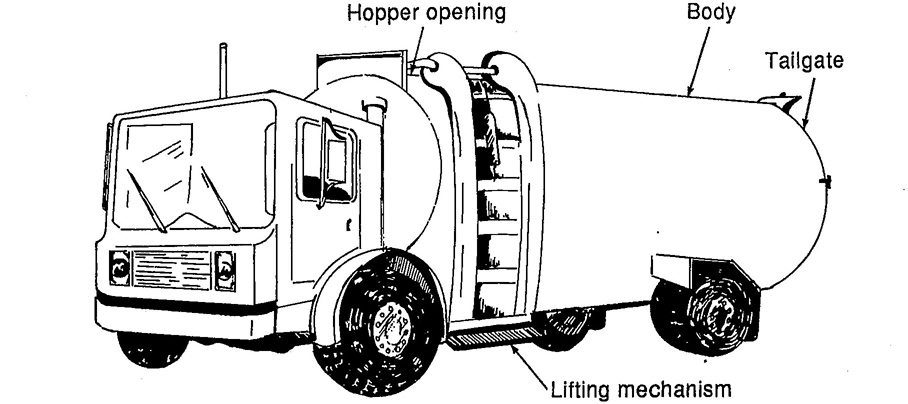
Figure 3 – Mechanized container collecting equipment
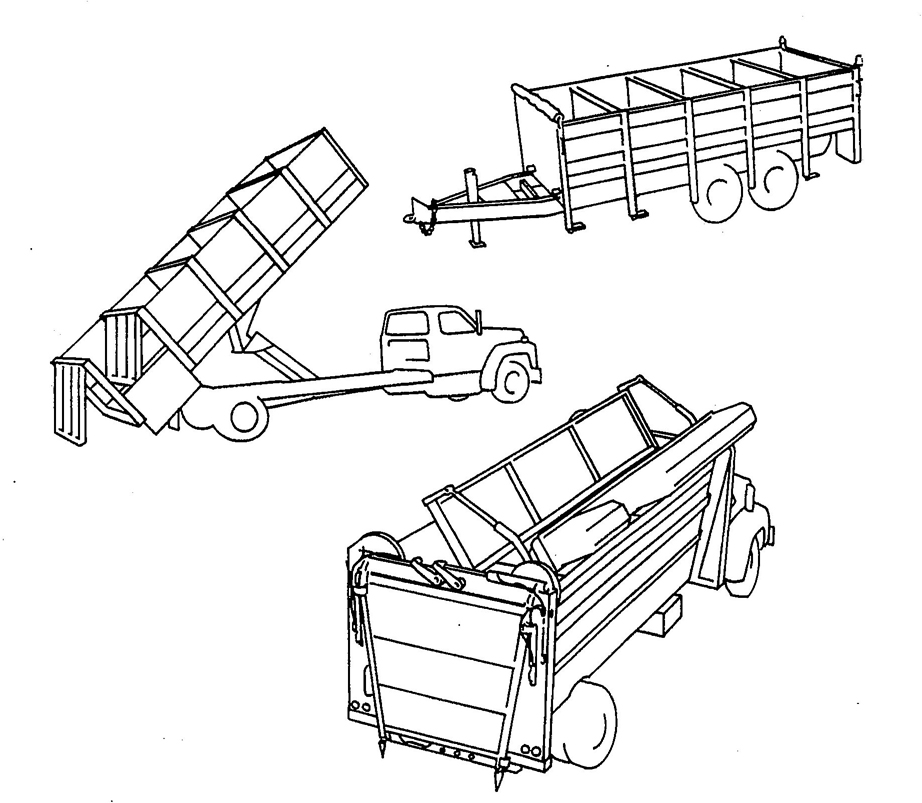
Figure 4 – Recycling collection equipment
63.40 rear-loading compacting equipment or rear loader: The body and tailgate assembly of a rear-loading collection vehicle (see figures 5, 6, and 7) that loads, compacts, and unloads refuse at the rear of the vehicle. These assemblies may include mechanical devices used for lifting and unloading containers into the hopper. The point of operation for rear-loading vehicles is the loading sill at the rear of the tailgate assembly.
3.41 riding step: The platform(s) provided for an employee to stand on while riding on the outside of the vehicle body during collection activities.
3.42 satellite vehicle: A collecting vehicle used to receive, transport, and unload refuse into other mobile equipment. Some satellite vehicles may also compact the refuse. The point of operation is the area(s) where refuse is loaded into the body.
3.43 service opening: An opening into the body or tailgate of mobile equipment that is designed to permit access to the interior for the purpose of service or maintenance, but not of a size to permit a person to pass through it.
3.44 side-loading compacting equipment or side loader: The body, packing mechanism, loading hopper and tailgate of a side loading collecting vehicle. This equipment receives refuse at the side or sides, and compacts, transports, and unloads refuse at the rear of the collecting vehicle (see figure 8). The point of operation is the loading sill located at the side or sides of the body.
3.45 compactor-container combinations: Powered machines that remain stationary when in operation, and are designed to compact refuse into an integral container. The entire unit may be moved for placement and unloading of refuse, typically using a tilt-frame or roll-off vehicle.
3.46 sustained manual pressure control: A control that requires continuous pressure by the operator.
3.47 tailgate: The hinged gate or door(s) that closes the rear of the body. The tailgate may or need not hold the packer panel, depending upon the body type.
3.48 tilt-frame or roll-off equipment: The tilt frame, tilt-frame support equipment, hoisting devices, tilt cylinders, and controls for operating the tilt-frame and hoisting devices for loading, dumping, and unloading containers or compactor-container combinations (see figure 9). Tilt-frame equipment can be mounted on an engine-cab and chassis or on a trailer chassis.
3.49 container hold-down locks: Devices on a tilt frame that mate with locks on the container used for securing the container, or compactor-container combination, to the tilt-frame during transport.
3.50 transfer trailer: A high volume body, mounted on a trailer chassis, used to move large amounts of refuse from one central processing or disposal facility to another (see figure 10).
7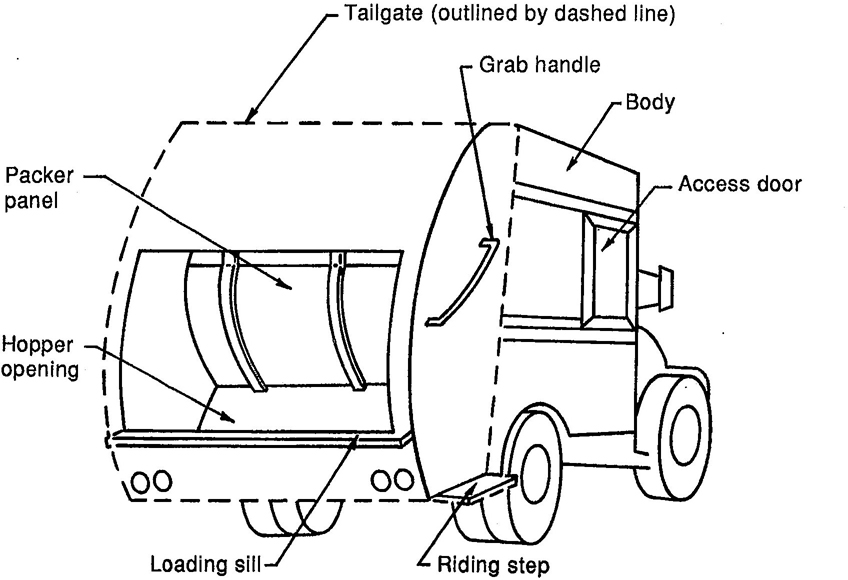
Figure 5 – Rear-loading compacting equipment
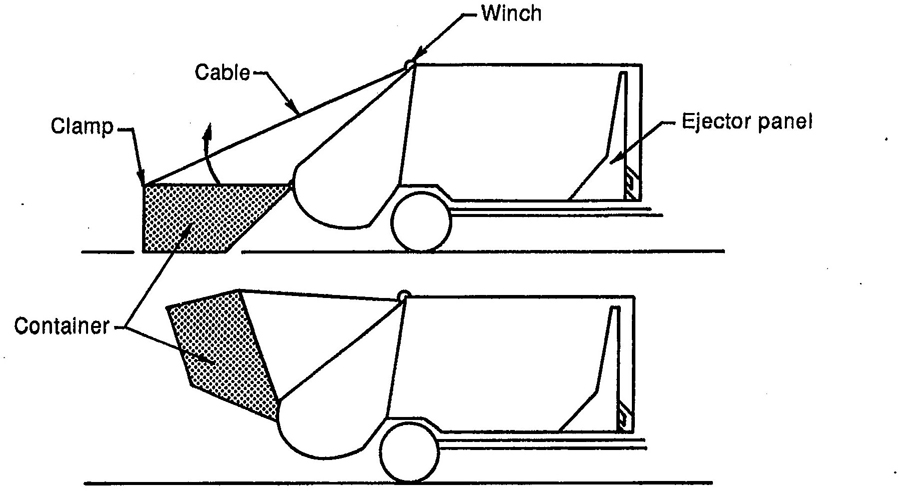
Figure 6 – Container operation of rear-loading compacting equipment
8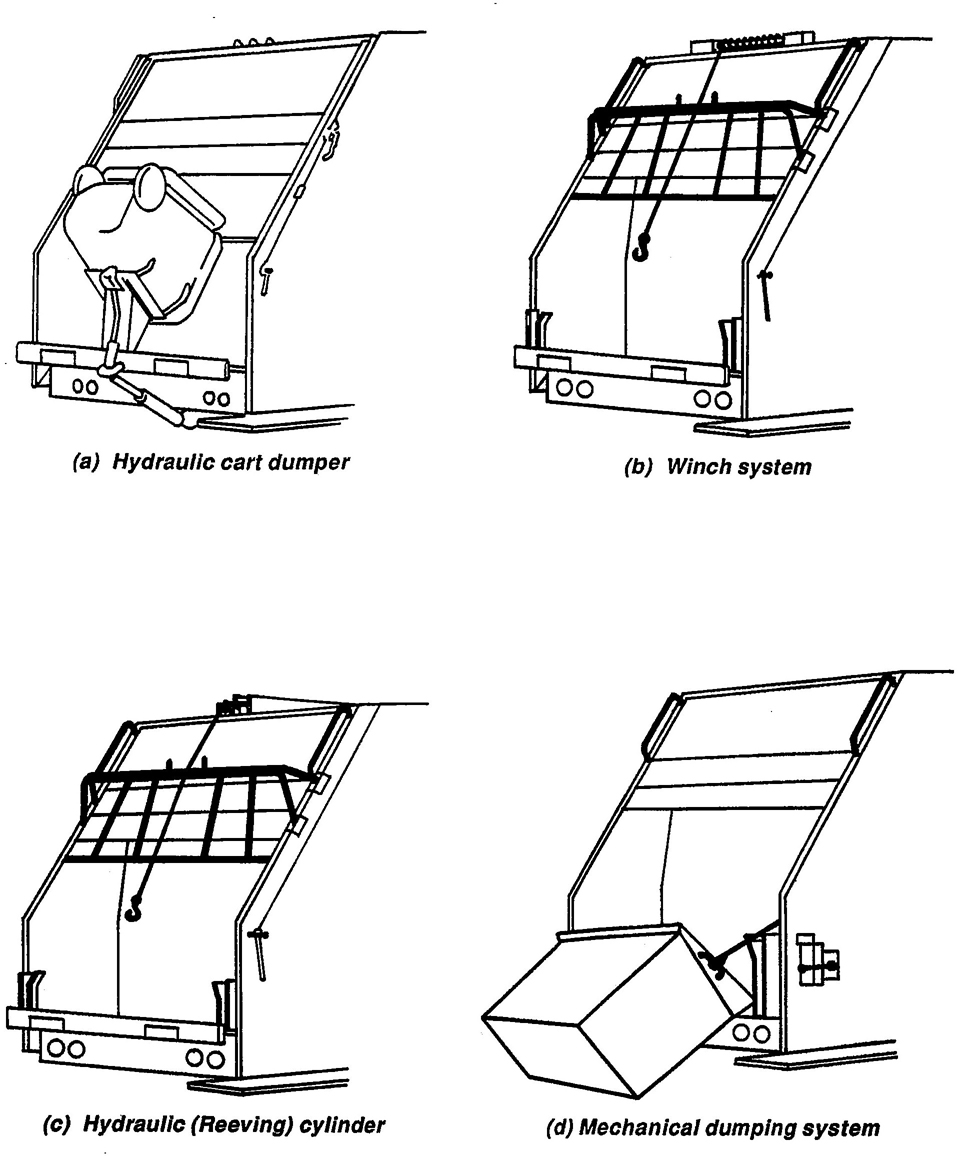
Figure 7 – Rear loader container lifting equipment
9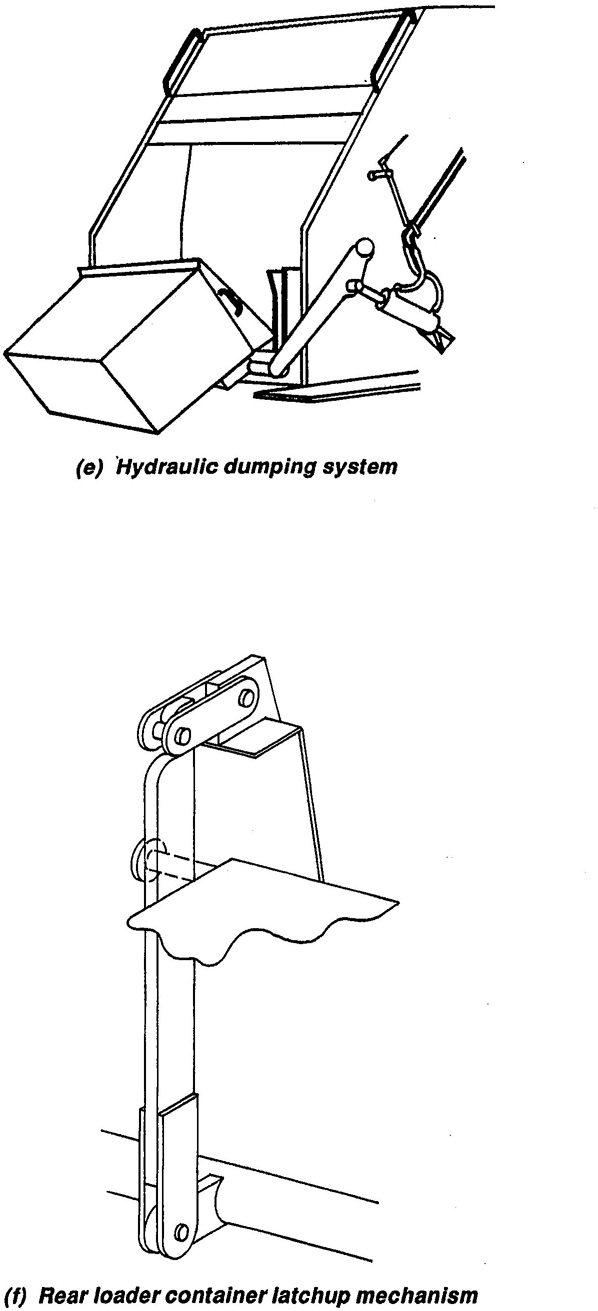
Figure 7 (concluded)
10
Figure 8 – Side-loading compacting equipment
11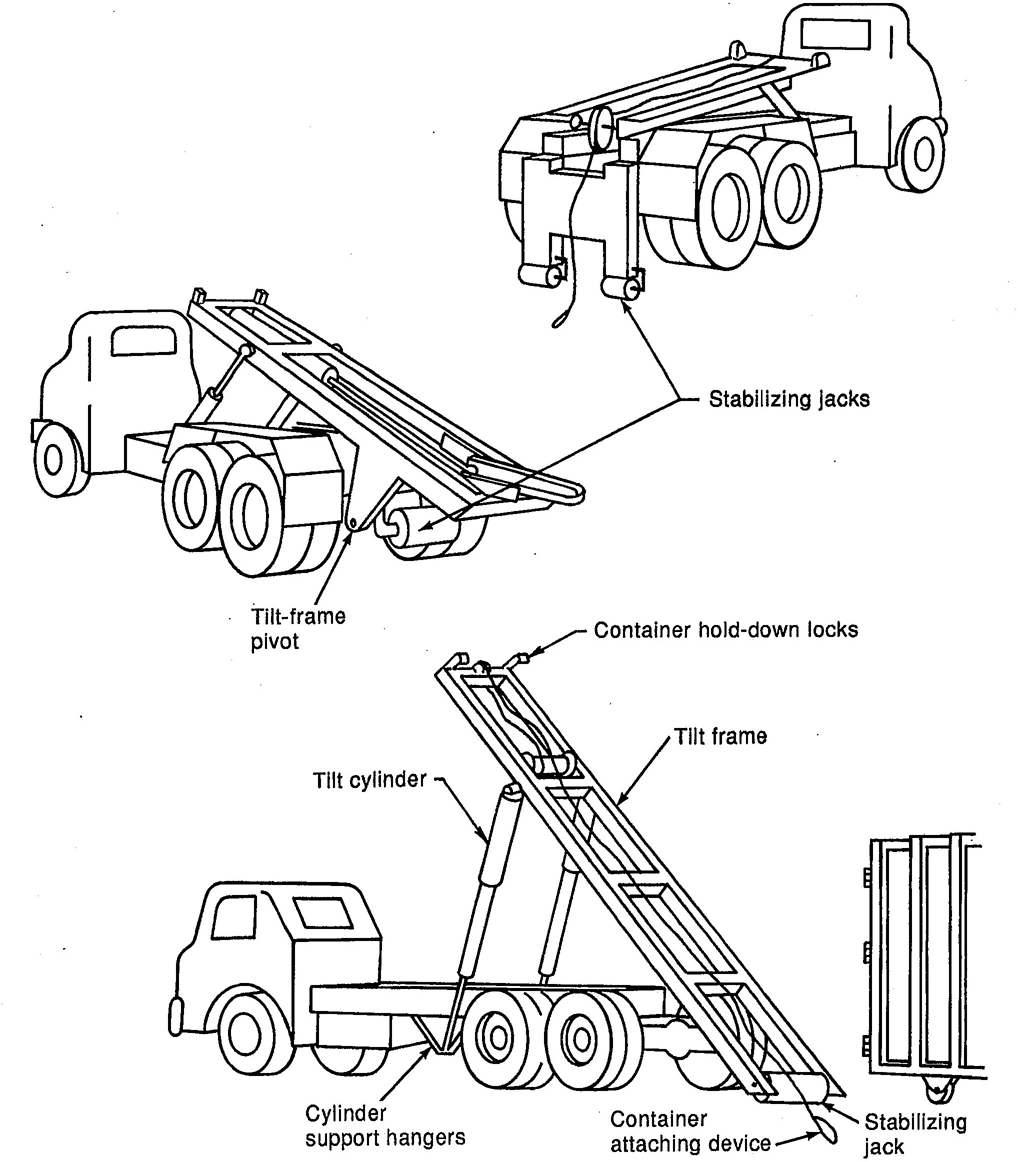
Figure 9 – Tilt-frame equipment
12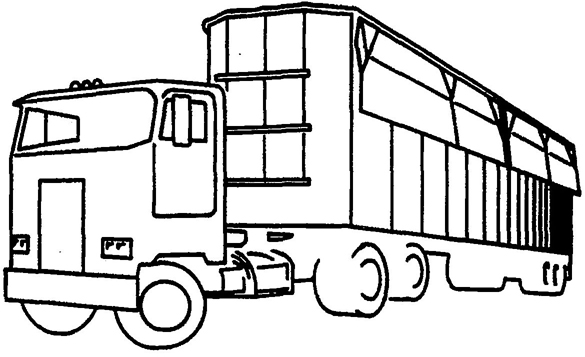
Figure 10 – Refuse transfer trailer
4.1 Design
Mobile equipment shall be designed and constructed in accordance with the appropriate clauses of this standard. Equipment shall be permanently identified with the name of the manufacturer, the date of manufacture or a code traceable to the date of manufacture, and a statement attesting to compliance with this standard.
4.2 Reconstruction
Any person (see 3.10) reconstructing (including where modifications occur) mobile equipment after the effective date of this standard shall do so in accordance with all sections of this standard and shall affix to such equipment his or her name, the date of reconstruction, and a statement attesting to compliance with this standard.
4.3 Modification
Any person (see 3.10) modifying mobile equipment after the effective date of this standard shall do so in accordance with the appropriate sections of this standard and shall affix to such equipment his or her name, the date of the modification, and a statement attesting to compliance with this standard.
5.1 Operating Instructions
Manufacturers shall develop and provide operating instructions establishing guidelines for the installation as appropriate, use, cleaning, and care of the unit. Such instructions shall include precautionary notices associated with the operation of the unit.
5.2 Reconstruction and modification
Any person modifying mobile equipment shall furnish operating instructions establishing guidelines for the use, cleaning, and care of the unit or component associated with the reconstruction (where modifications occur) or modifications. Instructions shall include precautionary notices associated with the reconstruction or modification.
5.3 Maintenance
The manufacturer shall develop and provide a program for maintenance including periodic and regular inspections of all mobile equipment.
5.4 Lockout procedures
The manufacturer shall provide instructions for a lockout procedure which shall isolate and
13render safe all energy sources, including hydraulic, potential and kinetic, except during maintenance testing. The lockout procedure will include, but not limited to, the following:
a) Shutting down all power sources, such as the truck engine and auxiliary engines, and disengaging the power take-off system;
b) Removing the key from the vehicle ignition;
c) Installing a tag on the steering wheel using a nonreusable fastener;
d) Placing frame and body supports as specified in 7.1.5;
e) Placing operating equipment in such a position as not to be subject to possible free fall and/or installation of additional blocking devices to prevent this potential; and
f) Relieving stored hydraulic or pneumatic pressure, after blocking devices are installed, if maintenance is to be done to the hydraulic system.
5.5 Overhead clearance
The final-stage manufacturer shall affix a sign or mark near the cab on the driver's side of the mobile equipment, except on hoist-type and tilt-frame equipment, stating the minimum overhead clearance required for the height of the vehicle when all equipment is positioned for normal over-the-road travel.
NOTE - See 6.1(j) for employer responsibilities for hoist-type and tilt-frame equipment.
6.1 Employer responsibility
The employer shall properly maintain mobile equipment to meet all applicable regulatory safety standards and shall be responsible for the following:
a) Providing for instruction and training of employees in safe methods of work before assigning them to operate, clean, service, maintain, or repair the equipment. Such instruction and training shall include procedures provided by the manufacturer. The employer shall maintain records of the names of employees trained and the dates of training;
b) Monitoring the employee's operation of equipment and taking appropriate action to ensure proper use of the equipment, including adherence to safe practices;
c) Establishing and following a program of periodic and regular inspections of all equipment to ensure that all parts, component equipment, and safeguards are in safe operating condition and adjusted in accordance with the manufacturer's recommended procedures. This shall include keeping all malfunction reports, and records of inspections and maintenance work performed;
d) Repairing, prior to placing equipment into service, any mechanical malfunction or breakdown that affects the safe operation of the equipment;
e) Meeting the appropriate lighting requirements during hours of darkness. Equipment may be used during hours of darkness when light is available for adequate visibility in the area of operation including the riding steps, loading hoppers, and overhead obstructions;
NOTE - This provision does not require the manufacturer to install extra lighting on the equipment.
f) Ensuring that the container-lifting mechanism will not be used to lift any weight that is reasonably believed to exceed the load rating of any of the individual components of the container-lifting mechanism;
g) Ensuring that component equipment, bodies, or tilt-frames, when raised for servicing or maintenance, have additional support in accordance with manufacturer's instructions;
h) Utilizing the manufacturer's recommended procedures for the lockout/tagout of energy sources in a program complying with part 1910. 147 of title 29 of the Code of Federal Regulations (OSHA). The procedure will include control of all keys;
i) Ensuring that all service opening covers and access doors are maintained and in place while the vehicle is in use;
14j) On hoist-type and tilt-frame equipment that services and carries detachable containers, or on compactor-container combinations, affixing a sign or mark near the cab on the driver's side stating the minimum overhead clearance required for the vehicle height dimensions when all equipment, including the container or compactor-container combination, is positioned for normal over-the-road travel;
k) Specifically inspecting safety equipment and other protective devices to ensure that these devices are not disabled or bypassed, and not to permit the operation of mobile equipment unless these devices are fully functional. These inspections shall be in accordance with 6.1(c);
l) Ensuring that no person uses a collecting vehicle to tow a trailer unless that collecting vehicle has been certified by a final stage manufacturer for such use;
m) Removing or blocking to prevent the use of riding steps on any vehicle that is used to tow a trailer;
NOTE - Only riding steps which are located behind the rearmost axle of the combination may be used (see 3.41 and 7.1.10).
n) Ensuring that no person uses a rear loader vehicle to tow a trailer during collection activities.
6.2 Operator/employee responsibility
6.2.1 General
Operators/employees who work on mobile equipment shall be responsible for the following:
a) Using all applicable safety features provided on the mobile equipment;
b) Using mobile equipment only after being properly instructed and trained in accordance with the instructions given in 6.1 and 6.2;
c) Reporting any damage to, or malfunction of, the mobile equipment by submitting a report to the employer, either when the damage or malfunction occurs, or as soon thereafter as practicable by the termination of the operating day. Such reports shall be documented by the employer;
d) Ensuring that access doors, if installed, are closed and locked before operations may begin;
e) Ensuring that the area of operation around container dumping systems, loading systems, and the container is clear of persons during all phases of the dumping operation prior to energizing the dumping system;
f) Ensuring that all persons are clear of the point of operation before actuating any packing cycle controls or container dumping controls, the operator/employee shall be ready to stop the packing cycle or container dumping operation if necessary;
g) Ensuring that all persons are clear of the tailgate before the tailgate is opened or shut, and the operator shall warn all persons not to cross under an open tailgate;
h) Operating all equipment in accordance with the manufacturer's instructions, which includes ensuring the proper position of all locks, doors, lids, etc;
i) Riding only in the cab or on riding step(s) designed for that purpose, and not on any part of mobile equipment;
j) Ensuring that no one disables or bypasses safety equipment or other protective devices, and that mobile equipment is not operated unless these devices are fully functional;
k) Adhering to the employer's lockout/tagout procedure when repairing or servicing mobile equipment;
l) Remaining at the operator's position during collection activities until the vehicle has come to a complete stop and the brakes are set.
6.2.2 Front-loaders
Operators/employees of front loaders shall be responsible for:
a) Ensuring that all persons are clear of the container-lifting mechanism and ejector panel when these components are in motion;
b) Ensuring that the ejector panel and hopper covers are properly positioned for container
15unloading prior to dumping the container.
6.2.3 Hoist-type and tilt-frame equipment
Operators/employees of hoist-type and tilt-frame equipment shall be responsible for:
a) Riding only in the cab when the tilt-frame or hoist-type equipment is in motion, and not on any other part of the vehicle;
b) Coupling and securing a container to a compactor frame as specified by the compactor manufacturer, where a container must be attached to a compactor.
6.2.4 Vehicles equipped with riding steps
Operators/employees of any vehicle equipped with riding steps shall be responsible for:
a) Ensuring that no persons ride on steps when the vehicle is backing up, when the vehicle is exceeding 10 mi/hr or operating in reverse, or when the distance travelled exceeds 2/10 mile;
b) Ensuring that no person ride on the loading sill or in the hopper.
6.2.5 Stand-up drive vehicles
Operators of vehicles equipped with driving controls where the driver maintains a standing position shall limit speed to 20 mi/hr.
7.1 General equipment safeguards and features
7.1.1 Access doors
Access doors shall be located in view of the operator's station or be interlocked for access doors where a pinch exists. Access doors shall be secured externally by a lockable or latchable device.
7.1.2 Attachment points
Components that must be raised for service or maintenance shall be provided with attachments points, or have attachment points identified, for additional support. Instructions shall be provided to explain their proper use.
7.1.3 Automatic neutral interlock
A neutral position interlock shall be required on all vehicles equipped with an automatic transmission, if the throttle is automatically advanced when the compacting or other auxillary equipment is operated.
7.1.4 Controls
7.1.4.1 Controls shall be conspicuously labeled as to their function.
7.1.4.2 Sustained manual pressure controls shall be used for raising the body or tailgate or moving the hoisting or lifting mechanisms or the ejector panel.
7.1.4.3 Electrically controlled components operated by push buttons shall have start buttons recessed or located so as to prevent unintentional activation. Stop buttons shall be red, distinguishable from all other controls by size and color, and not be recessed.
7.1.4.4 Controls for raising the tailgate, raising the body, or unloading the refuse shall be located away from the discharge area.
7.1.4.5 For emergencies, a means of stopping the packing cycle at any point, and a means of reversing the packing mechanism away from any pinch point, shall be provided.
7.1.5 Frame and body support
Equipment with dumping bodies or tilt frames shall be provided with a positive means of support, permanently attached and capable of being locked in position, to prevent accidental lowering of the body or tilt frame while maintenance or inspection work is being performed under no-load conditions. On equipment that is hydraulically powered, in both the raise and lower positions, an alternate positive means of support may be effective, as a permanently attached support may be provided by the manufacturer. A sign shall be located near the support providing instructions for its use.
7.1.6 Grab handles
Grab handles shall be provided in conjunction with riding steps. Each grab handle shall be capable of withstanding a pull of at least 500 lb.
167.1.7 Lifting devices
Cables and chains used on lifting devices shall have a minimum safety factor of 2:1 based on the maximum rated load, lift, or pull capacity.
7.1.8 Lifting devices and arms
Lifting devices and arms shall be designed in such a way that the vehicle operator may enter and leave the cab any time.
7.1.9 Point-of-operation protection
On compacting equipment, the employee shall be protected from any pinch point at the point of operation during the packing cycle by one of the following means:
a) Sustained manual pressure controls for the Initiation of the packing cycle until the packer panel clears any pinch points, the loading silt, or both;
b) A movable guard that is interlocked with the packing cycle so that it is in place before the packer panel is within 6 in of any pinch point. The movable barrier shall be designed so that it shall not be hazardous in itself;
c) A control that provides an Interrupted cycle. Actuation of the control shall cause the packer panel to stop not less than 6 in, or more than 16 in, from any pinch point. The control shall require reactivation to complete the packing cycle by a subsequent motion by the operator;
d) A hopper that raises any pinch point during the packing cycle at least 5 ft above the working surface;
e) Other means, at least as effective as those given in 7.1.9(a) through 7.1.9(d).
7.1.10 Riding steps
If provided, riding steps shall:
a) have a slip-resistant surface and be self cleaning;
b) be capable of supporting 500 lb at the point furthest from its point of attachment;
c) be mounted not more than 24 in above the road surface;
d) have a depth of at least 8 in and provide a minimum of 220 square in of surface area;
e) riding steps, if provided, shall be located behind the rearmost axle of the vehicle, but shall not extend beyond the rearmost structural portion of the vehicle except as described in 7.2.2.4.
7.1.11 Loading platforms
If provided, loading platforms shall:
a) have a slip-resistant surface and be self cleaning;
b) be capable of supporting 500 lb at the point furthest from their points of attachment;
c) be mounted not more than 24 in above the road surface.
7.1.12 Safety signs
7.1.12.1 All safety signs shall be color coded in accordance with ANSI Z53.1-1974. In addition, the ANSI Z35.1-1972 series should be consulted for examples of alternate wording of these signs.
7.1.12.2 On all vehicles equipped with bodies, caution signs shall be located next to all body entrance locations on the outside, such as:
CAUTION – STOP ENGINE AND REMOVE IGNITION KEY BEFORE ENTERING
7.1.12.3 On all vehicles with access doors, a caution sign shall be located next to all body entrance locations near unhinged sides of the access doors (not on the doors), such as:
CAUTION – KEEP ACCESS DOOR CLOSED WHEN EJECTOR PANEL IS IN MOTION
7.1.12.4 ON all vehicles equipped with tail-gates, a sign shall be located on the sides of the body at the rear, such as:
DANGER – STAND CLEAR WHEN TAILGATE IS IN MOTION AND DURING UNLOADING CYCLE. DO NOT STAND UNDER OR CROSS UNDER RAISED TAILGATE
7.1.12.5 On vehicles equipped with stand-up driving positions a sign shall be located so as to be visible to the operator, such as:
17CAUTION – DO NOT OPERATE VEHICLE IN EXCESS OF 20 MPH FROM STAND-UP POSITION
7.1.12.6 On vehicles equipped with riding steps, caution signs shall be affixed to the sides of the vehicle above the riding steps and at the driver's station, such as:
CAUTION – DO NOT USE RIDING STEPS WHEN THE VEHICLE IS EXCEEDING 10 MPH OR OPERATING IN REVERSE OF WHEN DISTANCE TRAVELLED EXCEEDS 2/10 MILE
7.1.13 Service openings
Service opening that exposes pinch points shall be protected by a removable cover if such openings are subject to inadvertent entrance.
7.1.14 Tailgate latching and locking devices
7.1.14.1 The tailgate locking mechanism used to secure the tailgate to the body of the vehicle or container shall be capable of with-standing the maximum design forces for this area. The tailgate locking mechanism shall be designed to prevent sudden opening as it is unlatched.
7.1.14.2 On vehicles and containers equipped with side-hinged tailgates, positive latching devices shall be provided to hold the tailgate(s) open when refuse is being unloaded.
7.1.15 Warning signals
7.1.15.1 A visual or audible warning signal, or both, shall be provided in the cab to indicate when the lifting mechanism, top door covers, body, tilt frame, or tailgate are elevated and would create a hazardous driving condition. Visual devices, when used, shall be located within the drivers scan. Audible warnings, when used, shall be distinct from other audible warnings in the cab.
7.1.15.2 An external audible warning signal device, conforming to ANSI/SAE J994b, type a, b, or c or a self-adjusting alarm with a minimum output of 87 db, shall be provided to actuate:
a) when the vehicle is operated in reverse;
or
b) when top-hinged tailgates are open.
7.2 Specific mobile equipment safeguards and features
7.2.1 Front-loading equipment
7.2.1.1 Cab protector
A protective guard shall be provided if a container can come into contact with the cab or windshield while being elevated.
7.2.1.2 Container-lifting mechanism
Sustained manual pressure controls shall be used for operating any part of the container-lifting mechanism.
7.2.2 Rear-loading equipment
7.2.2.1 Access doors
Access doors shall be located next to, and in view of, the ejector panel operator.
7.2.2.2 Controls
Packing cycle controls shall be located so that the operator has a clear view of the point of operation. In order to minimize exposure to normal traffic, the packing cycle operating controls shall be located on the side of the vehicle opposite the normal traffic side of the vehicle. When two sets of packing cycle controls are needed, they shall be located only on the same side of the tailgate.
7.2.2.3 Lights
All rear facing lights shall be placed so that they are visible from behind the truck when employees are standing on the riding step. Container lifting or unloading devices shall be installed so as not to obscure rear facing lights.
7.2.2.4 Riding Steps
In addition to the requirements of 7.1.10, steps shall extend no more than 8 in beyond the vertical plane that intersects that rearmost structural portion of the truck of hopper, and shall extend no more than 8 in inboard of the inside edge of the hopper opening. Steps and riding platforms shall not extend beyond the rearmost portion of the vehicle except as described herein (see figure 11).
18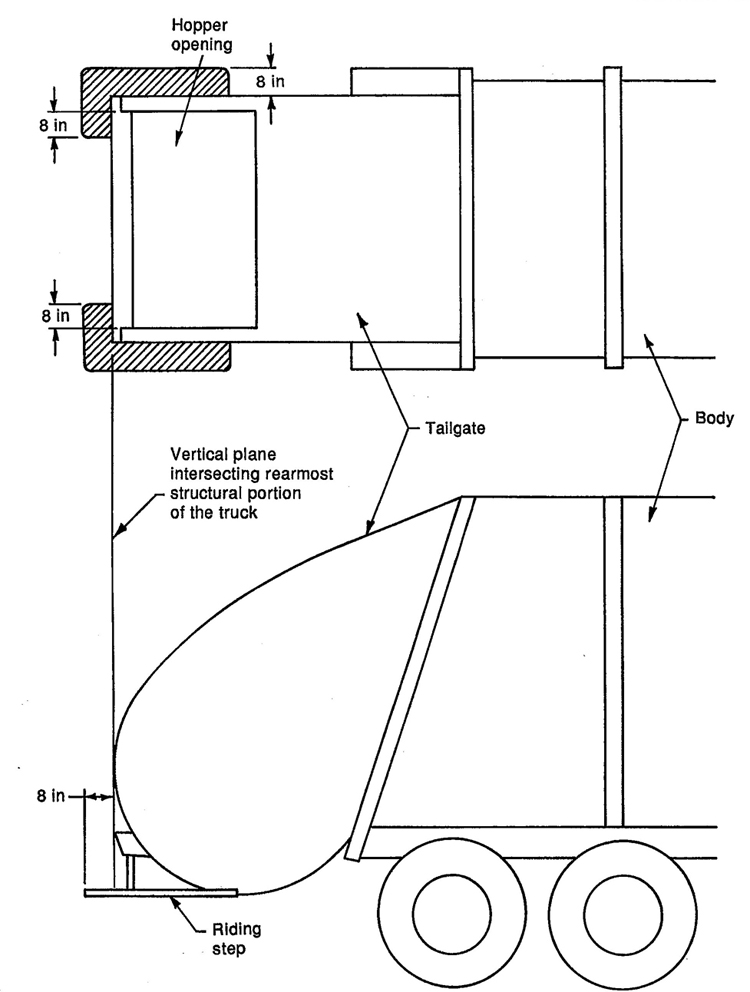
Figure 11 – Mobile compactor rear-riding step configuration
197.2.2.5 Safety signs
A sign shall be located on the rear of the packer panel, such as:
DANGER – STAND CLEAR WHEN PACKER PANEL IS IN MOTION
7.2.2.6 Rear loader container lifting devices
Lifting devices installed on rear loader equipment used to lift containers with a capacity of from 1 to 10 yd3 shall meet the requirements in 7.2.2.6.1 or 7.2.2.6.2.
7.2.2.6.1 Lifting equipment designed to accommodate refuse containers described in ANSI Z245.6 shall meet the following requirements:
a) a device or devices shall be provided which secures the container trunnion bar in the container dumping mechanism;
b) container lifting hooks shall be equipped with a safety latch, such as containing a spring loaded bar which prevents disengagement of the hook from the container;
c) the container latch-up system shall be designed so as to restrict the lateral movement of the trunnion bar in the pivot plate;
d) controls shall be of the sustained manual pressure type and located such that an employee cannot activate the controls while standing under a raised container; and
e) that a label be located near the operating controls such as:
COMPATIBLE WITH ANSI Z245.6 CONTAINERS
only if the lifting system is designed to accommodate containers manufactured in accordance with ANSI Z245.6.
7.2.2.6.2 Lifting devices designed to accomodate containers other than as described in ANSI Z245.6 shall meet the requirements of 7.2.2.6.1(b), and (d) and shall provide an alternative means of securing the container in the lifting device.
7.2.3 Satellite vehicles
7.2.3.1 Packing cycle controls shall be located so that the operator has a view of the loading sill.
7.2.3.2 For emergencies, a means of stopping and moving the packer panel away from the pinch point (prior to the pinch point) shall be provided.
7.2.4 Side-loading equipment
7.2.4.1 Packing cycle controls shall be located so that the operator has a view of the point of operation.
7.2.4.2 A type B side-loader (figure 7(b)) having a loading height of not less than 42 in measured from the ground, shall be considered as meeting the requirements of 7.1.9.
7.2.4.3 A sign shall be located on the sides of the body near the loading hopper, such as:
DANGER – STAND CLEAR WHEN PACKER PANEL IS IN MOTION
7.2.5 Tilt-frame and hoist-type equipment
7.2.5.1 Container hold-down locks shall be capable of holding the container in place when the vehicle is operated on an inclined or rough surface (road, street, etc).
7.2.5.2 Operating controls outside of the cab shall be located in an accessible position, to ensure that the container can be loaded without striking the operator in case of accidental dropping.
7.2.5.3 Unloading, pull-on, and lift-arm controls shall be sustained manual pressure controls and located in such a position that the operator has a clear view of the front of the container at all times.
7.2.6 Mechanized container collecting vehicles
7.2.6.1 Controls for loading refuse into the vehicle shall be located so that the operator has a view of the lifting mechanism and the container to be lifted.
7.2.6.2 A sign shall be located on the sides of the body, such as:
DANGER – STAND CLEAR WHEN LIFTING DEVICE IS IN MOTION
7.2.7.1 Recycling vehicles
7.2.7.1 On multi-compartment units equipped with moveable partitions, the release mechanism shall be capable of withstanding the forces created by the maximum loading of the compartment
20and shall be designed so as to protect the operator from the sudden movement of the partition.
7.2.7.2 On units equipped with overhead loading mechanisms, signs shall be located near the operating controls such as:
CAUTION – CHECK OVERHEAD CLEARANCE BEFORE OPERATING LOADER
and
DANGER – STAND CLEAR OF LOADER WHEN IN OPERATION
7.2.8 Transfer trailers
A sign shall be located on the body near the tailgate release mechanism such as:
21DANGER – STAND CLEAR WHEN OPENING TAILGATE
ANSI Z35 1-1972, Specifications for accident prevention sign5)
ANSI Z245.2-1992, Refuse collection, processing, and disposal equipment – Stationary compactors – Safety requirements
ANSI/NFPA 70-1990, National electrical code
5) This American National Standard has been administratively withdrawn and will be superseded by ANSI Z535, 1 through Z535.5. The ANSI Z535 Series of standards will be published by the National Electrical Manufacturers Association (NEMA), 2101 L Street, NW, Washington, DC 20037. Contact NEMA for more recent information. (ANSI Z35.1-1972 is still available in archive form from ANSI. Contact ANSI's Sales Department.)
22 23 24 25